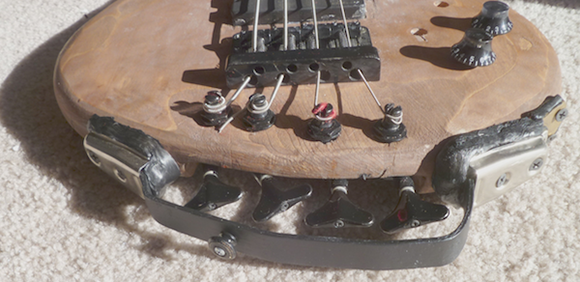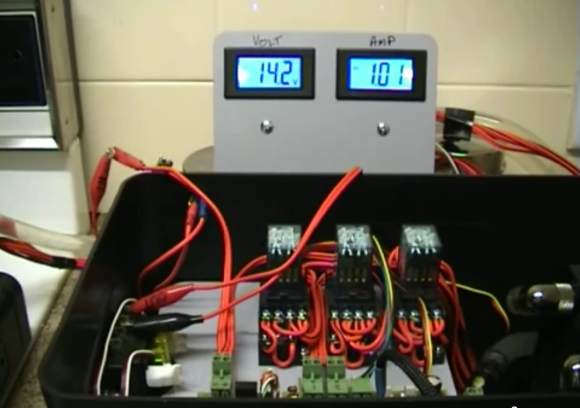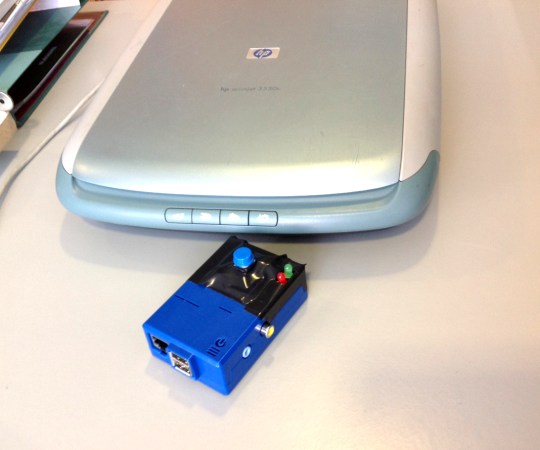
A while back [Michael] inherited a broken bass guitar from a friend. The headstock for this bass was cracked right down the middle, and the friend attempted a repair with a bolt and a couple of washers. After trying to figure out what the addition of a bolt was trying to accomplish, [Michael] set to work repairing this bass and ended up doing a headless conversion.
A headless bass, just as the name implies, does away with the headstock and moves the tuners to the other side of the guitar – in [Michael]’s case, right below the bridge. After sawing off the broken headstock above the truss rod, [Michael] made a string retainer and bolted it on to the remainder of the neck.
The tuners had to be moved, of course, so [Michael] routed out a section of the body below the bridge. Four holes were drilled and the original tuners slipped right in. The result is a perfectly functional bass that would fit right in to the tour van of an 80’s metal band.
You can check out [Michael]’s bass down in the pocket.
Continue reading “Turning A Broken Bass Into A Headless Bass”

















